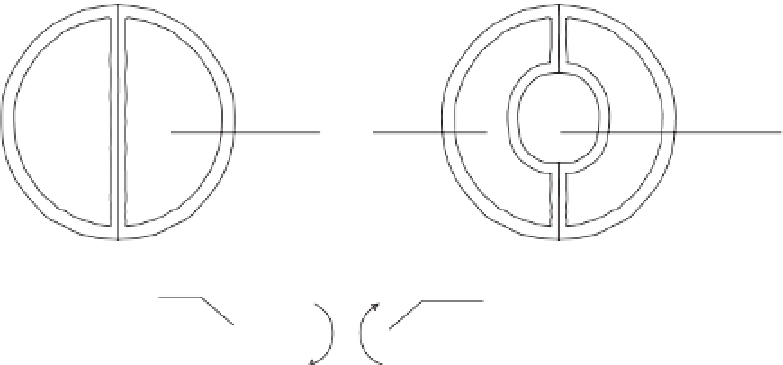Agriculture Reference
In-Depth Information
Photosynthesis depends on a series of
external and internal factors. The internal
factors are the characteristics of the leaf
(structure, chlorophyll content), the accu-
mulation of products assimilated in the
chloroplasts of the leaves, the availability
of water, mineral nutrients and enzymes,
among others (Hall and Rao, 1977). The
most relevant external factors are the
radiation incident on the leaves (quantity
and quality), temperature, the ambient
humidity and the concentration of CO
2
and oxygen in the surrounding air (Hall
and Rao, 1977).
Liebig's 'law of minimums' and
Blackman's 'principle of the limiting fac-
tors' explain the interactions between the
several factors that simultaneously influ-
ence photosynthesis and the speed of the
photosynthetic process (Mastalerz, 1977).
The Blackman principle enunciates:
'when a process is conditioned by differ-
ent factors, the velocity of the process is
limited by the velocity of the slowest
factor' (i.e. 'the limiting factor imposes a
limit which prevents the effect of other
factors beyond this limit') (Mastalerz,
1977). When the limiting factor ceases to
be, the remaining factors may express
their corresponding effect beyond the pre-
vious limit.
Nevertheless, there is certain short-
lived compensation between climatic
factors at certain developmental stages, as
is the case with light and temperature
(Berninger, 1989), so that poor light condi-
tions may be compensated for by select
thermal conditions and vice versa.
The surface of vascular plants has some
openings, called stomata, through which
the gas exchanges between the plant and the
environment take place. The stomata are
located in the under surface of the leaves.
By opening the stomata the plants take CO
2
from the air, but lose water vapour to the
exterior, which induces cooling of the leaf
as the water evaporates as well as a water
flux towards the leaves which allows for the
transport of water and nutrients from the
roots to the foliage.
Every stoma is surrounded by two
guard (occlusive) cells and may have other
associated auxiliary cells. The guard cells
control the size of the opening (or pore
called the ostiole) of the stoma (Fig. 6.2).
Depending on the turgor of the guard cells,
which is determined by their water content,
the size of the opening is regulated.
(a)
(b)
Guard
cells
Pore
(called an ostiole)
(c)
Pore
Surface of
the leaf
O
2
CO
2
Guard cell
Fig. 6.2.
A stoma, in closed (a) and open (b) positions. (c) Cross-section through a stoma.







